Reporting in Real Time: 5 Journalists Reflect on Covering 9/11
Twenty years ago, these women told the stories of leaders, first responders, witnesses, and victims. Today, they tell their own.



Ask anybody what they were doing on the morning of Tuesday, September 11, 2001, and they'll tell you about the clear blue skies. The first phone call to "turn on the TV." The moment they began witnessing the unimaginable events that were quickly unfolding in real time: At 8:46 a.m., a plane hijacked by terrorists crashed into the World Trade Center's North Tower. Seventeen minutes later, the South Tower. Thirty-four minutes after that, the Pentagon. At 10:03 a.m., a field in Shanksville, Pennsylvania. By 10:28 a.m., both towers had collapsed.
While people across the country were rushing to pick up their kids from school, waiting for the call from a loved one that would never come, and standing in front of their TV screens in horror searching for answers to make sense of it all, journalists knew they had a job to do. For TIME's Nancy Gibbs, that meant turning around a story for the magazine's black-bordered special issue in less than 48 hours. For NBC News' Ann Curry, that meant temporarily functioning as a producer in the broadcast studio before heading down to Ground Zero to report from the scene. For the Associated Press (AP)'s Sonya Ross, that meant traveling with President George W. Bush on board Air Force One as he ran the country from 40,000 feet. For USA Today's Susan Miller, that meant leading her team as they copy-edited, fact-checked, and wrote headlines while smoke billowed past the windows of the Virginia newsroom. For the AP's Gulnara Samoilova, that meant grabbing her camera and running toward the World Trade Center. For all of them, it meant putting personal fears aside to document one of the most significant days in American history.
Twenty years ago, these women told the stories of leaders, first responders, witnesses, and victims. Today, they tell their own. As Americans continue to mourn the nearly 3,000 lives lost on 9/11 and grapple with the effects of the two-decade war that followed, Marie Claire spoke with these five journalists about what it was like covering the September 11 attacks and the lessons that can be learned today.
Nancy Gibbs, 'TIME' Senior Editor
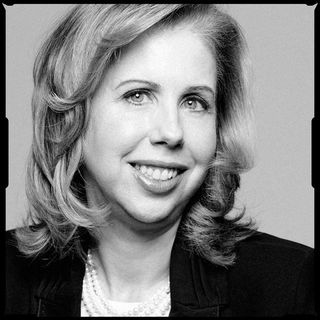
Nancy Gibbs wasn't surprised that she was chosen to write the cover story for TIME magazine's 9/11 special issue. What she was surprised to learn is that her boss only wanted one story by one writer to recount the full picture of the day. Here, the then-senior editor (who remains an editor-at-large at the magazine) reflects on penning the award-winning story, "If You Want to Humble an Empire," in less than 48 hours, with the help of more than 100 reporters.
Get a peek at Gibbs's story, below, then read the full piece here.
Ann Curry, NBC News Correspondent
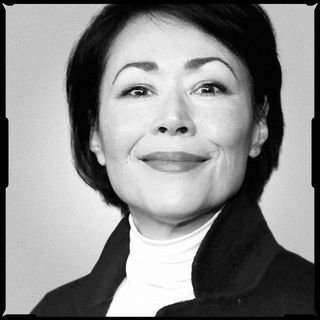
Around 8:30 a.m. on September 11, Ann Curry finished her last news segment of the morning on Today. About 15 minutes later, the first plane hit the North Tower. After scrambling behind the scenes to give NBC Nightly News anchor Tom Brokaw, who was reporting the news on-air, any facts she could find until the producers arrived at the studio, Curry prepared to report live from Ground Zero the next day. The then-NBC News correspondent ended up doing so for weeks. Here, she recalls the courage she witnessed and the moment she heard "the drumbeats of war."
Get a peek at Curry's story, below, then read the full piece here.
Stay In The Know
Get exclusive access to fashion and beauty trends, hot-off-the-press celebrity news, and more.
Sonya Ross, AP White House Reporter

Sonya Ross was watching President Bush read to a room full of second-graders when the White House chief of staff interrupted to whisper something in his ear. As the color drained from the president's face, Ross realized it would be a day like no other. As the AP's White House reporter, Ross became one of five journalists who were part of the "nuclear bunker pool"—a rare procedure in which a select few reporters travel with the president to safety in the event of a national emergency. Here, she describes how she balanced her journalistic duty with her personal protection while working alongside the president.
Get a peek at Ross's story, below, then read the full piece here.
Susan Miller, 'USA Today' News Copy Desk Chief
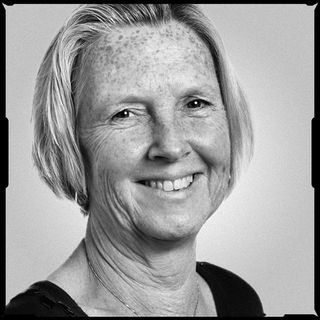
Susan Miller—USA Today senior breaking news editor, who, in 2001, ran the paper's news copy desk—refused to leave her office after the Pentagon crash, despite firefighters' attempts to evacuate her and her colleagues out of fear of another attack. Here, she takes MC inside the newsroom where her team worked diligently with reporters to publish the paper's September 12 edition—the best-selling print edition of USA Today in the paper's history.
Get a peek at Miller's story, below, then read the full piece here.
Gulnara Samoilova, AP Staff Photo Editor

As a seasoned photojournalist, Gulnara Samoilova's first instinct when she heard the second plane crash from her downtown apartment was to grab her camera and run toward the World Trade Center. Shortly after she arrived, she watched the South Tower collapse through her viewfinder. Here, the former AP staff photo editor chronicles what it was like to capture her award-winning photos and why, if something similar happened today, she might not make the same decision to rush to the scene.
Get a peek at Samoilova's story, below, then read the full piece here.
Rachel Epstein is a writer, editor, and content strategist based in New York City. Most recently, she was the Managing Editor at Coveteur, where she oversaw the site’s day-to-day editorial operations. Previously, she was an editor at Marie Claire, where she wrote and edited culture, politics, and lifestyle stories ranging from op-eds to profiles to ambitious packages. She also launched and managed the site’s virtual book club, #ReadWithMC. Offline, she’s likely watching a Heat game or finding a new coffee shop.
-
 Queen Camilla Twins With Kate Middleton For Christmas Day Church Service at Sandringham
Queen Camilla Twins With Kate Middleton For Christmas Day Church Service at SandringhamThe royals matched in festive green outfits and black suede boots.
By Amy Mackelden Published
-
 Kate Middleton Wore the Perfect Shade of Forest Green to Attend Church in Sandringham on Christmas Day
Kate Middleton Wore the Perfect Shade of Forest Green to Attend Church in Sandringham on Christmas DayThe Princess of Wales arrived at church holding hands with her youngest son, Prince Louis.
By Amy Mackelden Published
-
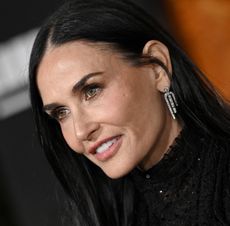 Simple-But-Genius Celebrity Skincare Secrets
Simple-But-Genius Celebrity Skincare Secrets"This actually sounds really gross, but..."
By Katherine J. Igoe Published
-
 Startup Life Helped Me Recover From a Year of Insurmountable Loss
Startup Life Helped Me Recover From a Year of Insurmountable LossTáche founder and CEO Roxana Saidi details how delving into her wildly successful pistachio milk venture helped her soul heal from five subsequent tragedies.
By Roxana Saidi Published
-
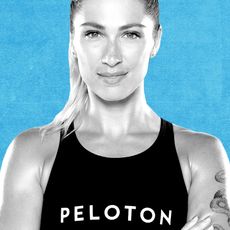 Peloton’s Selena Samuela on Turning Tragedy Into Strength
Peloton’s Selena Samuela on Turning Tragedy Into StrengthBefore becoming a powerhouse cycling instructor, Selena Samuela was an immigrant trying to adjust to new environments and new versions of herself.
By Emily Tisch Sussman Published
-
 This Mutual Fund Firm Is Helping to Create a More Sustainable Future
This Mutual Fund Firm Is Helping to Create a More Sustainable FutureAmy Domini and her firm, Domini Impact Investments LLC, are inspiring a greater and greener world—one investor at a time.
By Sponsored Published
-
 Power Players Build on Success
Power Players Build on Success"The New Normal" left some brands stronger than ever. We asked then what lies ahead.
By Maria Ricapito Published
-
 Don't Stress! You Can Get in Good Shape Money-wise
Don't Stress! You Can Get in Good Shape Money-wiseYes, maybe you eat paleo and have mastered crow pose, but do you practice financial wellness?
By Sallie Krawcheck Published
-
 The Book Club Revolution
The Book Club RevolutionLots of women are voracious readers. Other women are capitalizing on that.
By Lily Herman Published
-
 The Future of Women and Work
The Future of Women and WorkThe pandemic has completely upended how we do our jobs. This is Marie Claire's guide to navigating your career in a COVID-19 world.
By Megan DiTrolio Published
-
 Black-Owned Coworking Spaces Are Providing a Safe Haven for POC
Black-Owned Coworking Spaces Are Providing a Safe Haven for POCFor people of color, many of whom prefer to WFH, inclusive coworking spaces don't just offer a place to work—they cultivate community.
By Megan DiTrolio Published